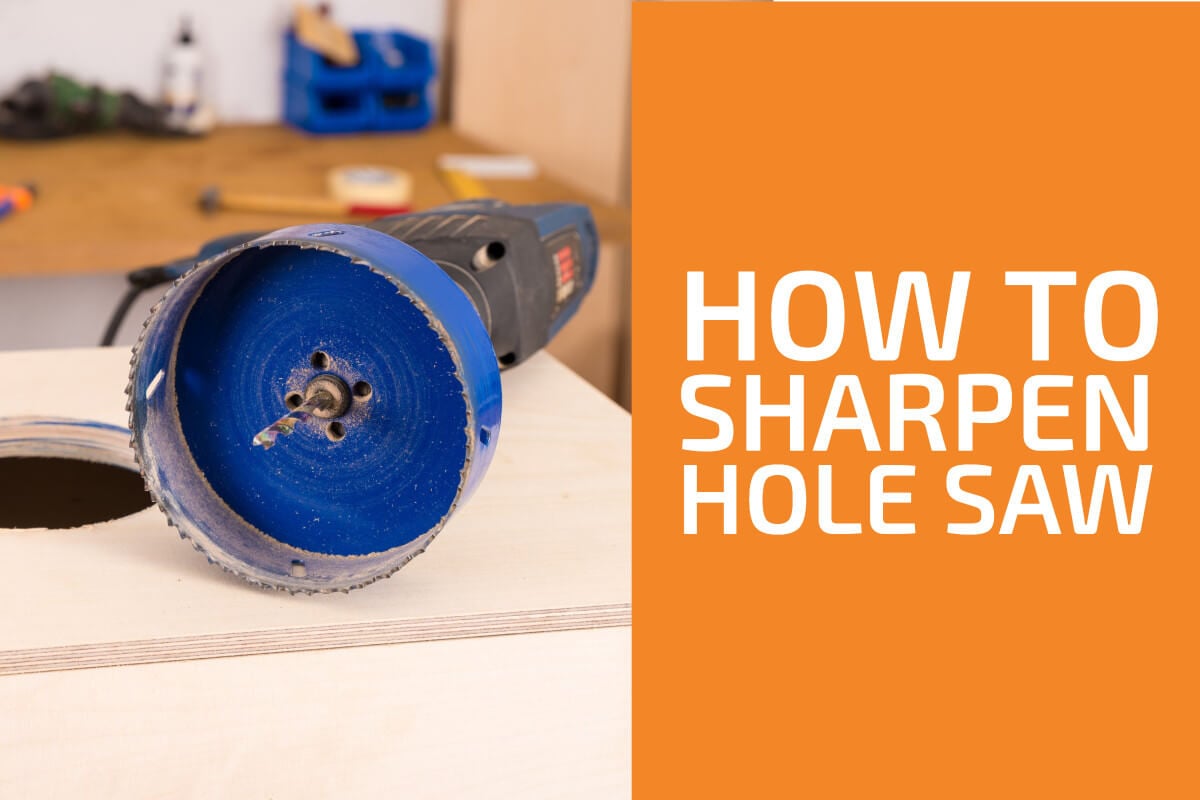
As you can probably tell, hole saws are great for drilling large holes into a variety of materials such as wood, aluminum, plastic and more. Now the bits on those hole saws, while they do last for quite some time, will eventually get dull, which means that they won’t be able to drill holes anymore.
You can obviously just go buy yourself a new bit, but that costs money. What doesn’t cost money is sharpening a hole saw by yourself. This is what we’re here to teach you today.
Can (and Should) You Sharpen a Hole Saw?
Yes, you absolutely can sharpen a hole saw. There is really no reason why you could not sharpen them. Sure, it’s not quite as easy as sharpening other types of blades, but with that being said, it is definitely doable. You do need to know what you are doing in order to be successful when sharpening a hole saw, but if you have the right technique and tools, then it should not be much of an issue, and can in fact help you save lots of money over the long run.
All that said, if you are in a hurry or prefer to save time rather than money, then it might be better for you to simply buy a new hole saw.
How to Sharpen a Hole Saw
OK, what is important to note here is that there are different methods that you can use to sharpen your hole saw. To make life as easy as possible for you today we will be talking about how to sharpen a hole saw using a universal blade sharpener. However, we will also take a quick look at the alternatives. Let’s get through it and sharpen that hole saw of yours.
Step 1: Prepare the Universal Sharpener
Your universal sharpener will have a drill end on the vice grip. Put the hole saw inside of this drill end of the vice grip on the universal sharpener. This part is usually detached, so you will need to secure it into the fitting first (the drill end of the vice grip on the sharpener looks like a chuck bit on a drill). Using the key provided with your universal sharpener, tighten the chuck so that the pole saw is secure. Don’t overtighten it though, because you could cause damage to the mechanism.
Step 2: Set It Up
Next, you will need to loosen the revolving head of the grip. Place the hole saw in it so that the teeth of the hole saw rest gently against the blade of the sharpener. Use the screw knob to ensure that the hole saw is secure against the sharpener blade. You may also need to use the head angle adjustment feature to adjust the teeth of the sharpening blade to the appropriate position for hole saw sharpening. In most cases, the head angler will be located on the front of the universal sharpener and looks like a very long and thin knob.
Step 3: Mark the Hole Saw
Keep in mind that hole saws are circular, so when you go to sharpen them, you will be moving in a circular fashion. To prevent yourself from doing two rotations or just resharpening teeth that you just sharpened, use something like a sharpie or permanent marker to mark the tooth on the hole saw that you started with, so once you complete a full revolution, you will know that you are done.
Step 4: Adjust the Hose
Your universal sharpener should have a hose that can be connected to a shop vac. You do really want to use a shop vac when sharpening a hole saw because you don’t want those metal shavings flying all over the place. Adjust the hose so it is directly under the hole saw in order to catch the most material possible.
Step 5: Sharpen
All you have to do now is to turn the universal sharpener on, move the hole saw so that it touches the sharpening blade, hold it for two or three seconds, and then pull the saw back. Rotate the hole saw and continue this process until you have sharpened all of the teeth. When you get to the marking, you know that you are done.
Alternative Methods
Although we will not discuss them in detail here today, if you do not have a universal sharpener, there are other methods that you can take advantage of. Other methods for sharpening your hole saw include using a bench grinder, an angle grinder, and a hand file too.
Which of these methods you can and cannot use will depend on the size of your hole saw among other things.
Mistakes to Avoid, Tips & Tricks
Lastly, before we go, here are a few tips to keep in mind:
- If you are not experienced at sharpening saw blades, start with some old ones, because you will need to practice.
- Unless you are super experienced on this front, although using an angle grinder or a hand file are options, they are much more difficult to use properly than a universal saw sharpener.
- Always wear protective goggles when sharpening hole saws, so that metal shavings cannot fly into your eyes.
In most cases, quite honestly, it is probably better to just buy a new hole saw blade, because sharpening is difficult, and if you don’t know what you are doing, you may actually achieve the opposite effect.
Summary
When all has been said and done, if you don’t want to buy a new one just yet, sharpening a hole saw with a universal sharpener is the way to go.
All that said, you might be better off just biting the bullet and getting a new one.
